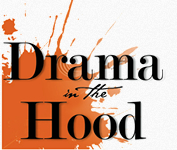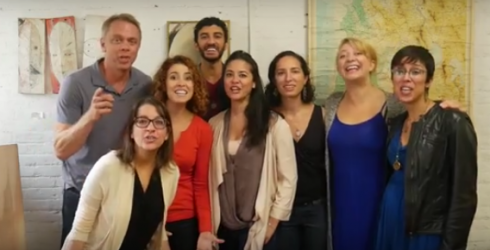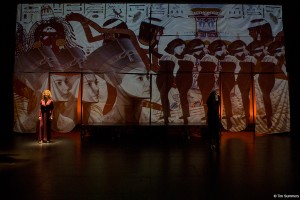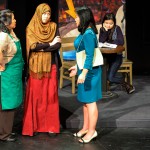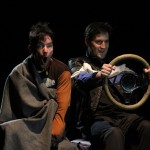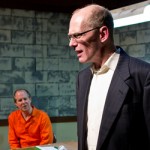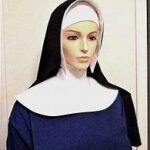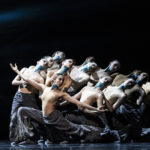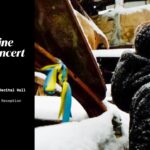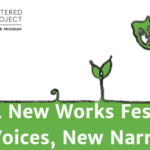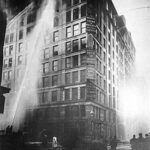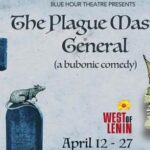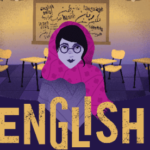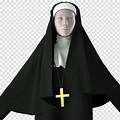The Life Model is collaborative performance art at its best. It showed how four people in Cairo got involved with the 2011 revolution. Egypt’s President Hosni Mubarek eventually resigned. In the US this pivotal period is known as Arab Spring. In Egypt it is called the 25th of January Revolution.
This production at On the Boards from January 14 to 17 gave one a glimpse into the results of democracy practiced on a small scale. Six artists, scattered around the country (Seattle, San Francisco, Austin, and New York), collectively composed this show. Democracy is time consuming, producer, co-writer, and actor Jeffrey Fracé said. Adding, they “used Google Hangouts a lot.” But there were times they needed to be on the rehearsal stage together. They raised $25,000 on Hatchfund for their travel, accommodations, and a modest salary.
Fracé, an associate professor in Drama at UW,with over 100 acting credits, found himself renewed and excited about this project. A week before the opening he said “how the show is coming together is way beyond anything I ever imagined. It makes theater more interesting and weird—in the most loving way possible.”
Pirronne Yousefzadeh as the director pulled the production together, so we, the audience, were spared the messiness. The performance cackled as the disruptions of both everyday life and everyday assumptions mounted day-by-day as the crisis built.
The tensions outside become arguments in the studio space of Henry, a white American artist (Fracé) who is in Cairo with a large commission to support his painting. The set of the studio is mostly open space with a few raised platforms on wheels. On either side are simple metal bars. From time to time, graffiti/Arabic calligraphy are painted on boards hung on picture hooks. Near the walls are the furniture and props of an artist living in a loft: a stove, some easels and supplies, a place to hang clothes and bags, etc.
With his privileged connections, Henry knows before it is announced that his Egyptian companion Muna (Maha Chehlaoui) has won a fellowship to work and study in California. She is a video artist.
Henry’s life model, Gabriella (Gisela Chípe), is in Cairo to sell her deceased mother’s home. She was born in Egypt but her parents immigrated to Brazil when she was a young child.
The play opens with Gabriella being distracted from her modeling by calls from her sister. Muna arrives and advises her that the streets are dangerous with protesters and neighborhood checkpoints. Muna invites Gabriella to stay or at least let Muna help her get through the convoluted Cairo streets. With her guide book in hand, Gabriella leaves to find her way alone.
She has only made it a few blocks before she has to consult the guidebook again. Ali (Ahmad Maksoud) had just spray painted calligraphy on a wall and is running from the police. He stops running to bum a cigarette from her. His evades the police by appearing to be casually smoking with Gabriella. Gabriella reluctantly accepts his offer to guide her through the city.
The four are now bound together. We watch them engage or withdraw from the tidal changes occurring in Tahrir Square.
This production was keyed to the eventful 18 days of the 25 January Revolution. With a line here or there they make reference to key events or the context for those protests. For example, Ali says he is living in a house with his sisters and is unemployed. Unemployment among youth and young adults is a big issue all the Arab Spring nations. In Egypt, in 2011, it was 33.9 percent according to the World Bank.
Part of the weird charm of this show is each of the four characters had a developmental arc. Henry is repeatedly challenged to abandon his privileged “tourist” status and join in. Muna, as a citizen, is quickly drawn to the protests. She has to make a decision whether to use her video skills in service to the protesters. Ali is a passionate youth, unemployed, and graffiti writer/Arabic calligrapher. He’s arrested and beaten by the police and feels defeated. Gabriella, a plastic surgeon, grapples with the pull to be of service—police and roving Mubarek-supporting thugs with machetes injured many protesters. Should she put her medical skills to use and go to their aid?
New York-based animator and video artist Zeina Barakeh presented a visual backdrop that spanned the back of the stage from wing to wing and from floor to ceiling. Her animation depicted the masses at the rallies by filling the blank fabric wall with a few people, then more, and finally crowding more and more people on the screen. As the crowd grows, so does Barakeh’s use of color for people’s clothes and the Egyptian flag.
Cleverly, she presents the corruption of Mubarek as an animated series of large out sized portraits, each uglier than the last. During the part of the play when Ali was being detained, she showed a series of photographs of Ali’s bruised face and black eyes to show how police abused detainees.
Two years ago Fracé felt inspired to produce a show that investigated the artist-model cliché. On the small scale, we can watch Henry draw and paint while looking at his model (Gabriella). And on a larger scale, there are deep issues raised about cultural appropriation when this play reveals Henry has used Islamic geometric forms in prior works. Curiously, this exact same set of questions lies at the center of Disgraced by Ayad Akhtar, currently running at The Seattle Repertory Theatre until January 31. The Rep is hosting discussions with the audience after every show.
Current plans are to take The Life Model to New York and elsewhere.
(Some background information for this review was provided by editor and journalist Mohamud Yussuf of Runta News.)
The Life Model at On the Boards. A Fracé | Yousefzadeh Production. On the Boards, 100 W. Roy St., Queen Anne. Jan 14 – 17. Show closed.
